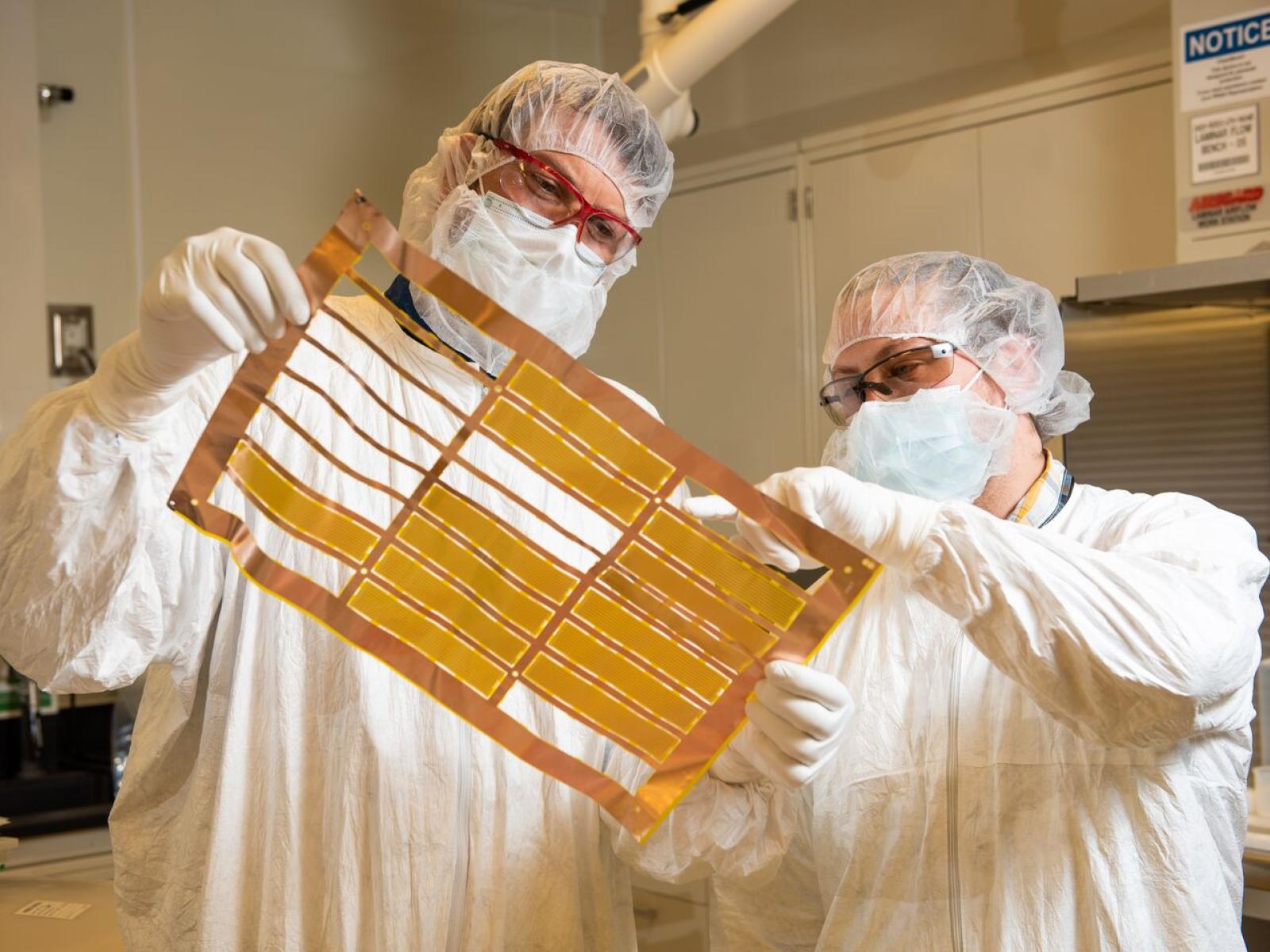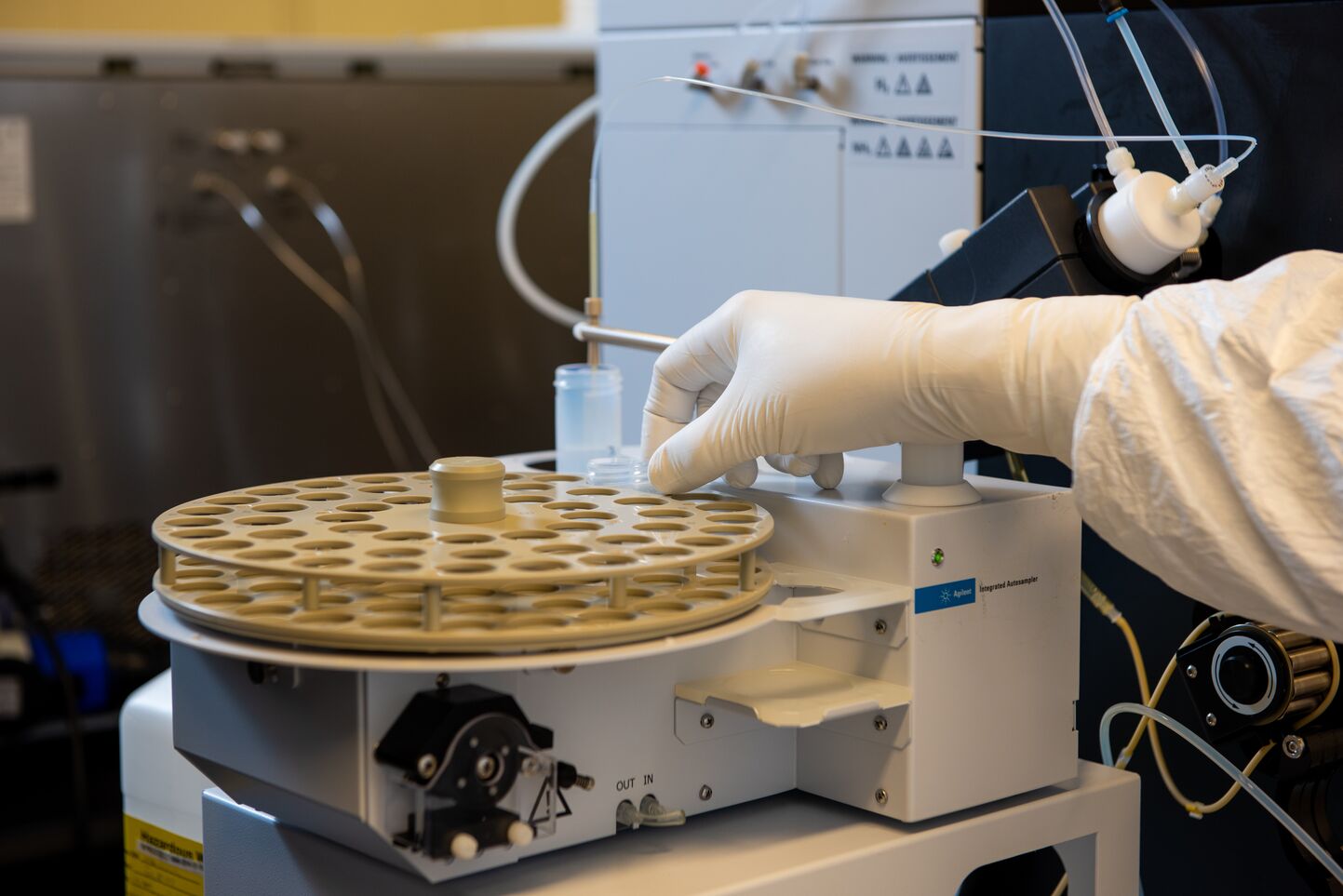PNNL Researchers Search for 'Ghost Particles'

A PNNL team, working with Q-Flex Inc., has produced ultra-quiet electronic cables for highly sensitive neutrino detectors that have extremely low levels of the naturally occurring radiation that can create false signals.
(Andrea Starr | Pacific Northwest National Laboratory)
Halloween horror movies often feature ghosts slipping through walls unnoticed by those in the dwellings they haunt.
At the Department of Energy’s Pacific Northwest National Laboratory, scientists seek to detect and measure neutrinos — the plentiful “ghost particles” that pass through concrete and humans without making an impact.
Researchers at PNNL and elsewhere study neutrinos because they offer a glimpse of cosmic events that occurred billions of years ago. The very concept of neutrinos is hard to imagine.
They travel at almost the speed of light, have no electric charge and weigh nearly nothing. And billions of them are passing through us right now. As creepy as that may sound, these mysterious subatomic particles could hold the key to understanding the origins of matter.
Detecting the presence of neutrinos is a daunting challenge, one that requires a team effort.

Joining more than 1,700 scientists from 38 countries, our researchers are part of the Deep Underground Neutrino Experiment, or DUNE. This project focuses on building ultrasensitive neutrino detectors.
DUNE receives a beam of neutrinos from the Fermi National Accelerator Laboratory near Chicago, sends it through a detector and then on to a much larger detector 800 miles away in South Dakota.
Led by PNNL scientists, the researchers’ latest design increases the detector’s sensitivity to neutrinos that are not produced as part of the experiment.

Informed by computer simulations, their design employs shielding, background radioactivity mitigation and enhanced light detection to improve the measurements to permit study of neutrinos from supernova or the sun.
In another project, PNNL scientists are developing radiation detectors to study the fundamental nature of neutrinos by searching for an extremely rare process called neutrinoless double beta decay.
To support these experiments, PNNL is designing special cables for the radiation detectors that aim to prevent interference with the instrument’s ability to identify signals of interest.
Working with a California small business, researchers produced electronic cables with ultra-pure materials that eliminate signals caused by naturally occurring background radiation.
In need for cables with contamination levels a billion times lower than in a speck of dust, the scientists designed these “quiet” cables based on precise measurements of the minute amounts of uranium, thorium and potassium introduced in each step of the cable production process.
The researchers then worked with the company to develop tailored fabrication techniques, special cleaning methods and careful handling procedures to manufacture the cables. The result: cabling with radioactivity levels a hundred times lower than previously available.
In another example of PNNL’s nuclear physics prowess, our scientists are part of an international team devising a novel approach to measuring the neutrino’s mass. Relying on Einstein’s famous E=mc2 equation, they seek to measure the tiny amount of energy released as tritium decays.
During a process known as beta decay, tritium is converted into one helium ion, one electron and a neutrino that collectively possess the energy released. If researchers can precisely measure the electron’s speed, they can deduce the neutrino’s mass since they know the mass of the tritium atom.
This is no small feat given that neutrinos are up to 500,000 times lighter than an electron. Nonetheless, the researchers recently demonstrated their system at the University of Washington, where they tracked 3,770 tritium beta decay events in a sample cell the size of a pea.
It may be hard to imagine the ghost particles at the center of these three efforts, but the ingenuity and innovation of the researchers striving to study them are apparent.
Their focus on these abundant, invisible particles will shed light on some of the mysteries of our universe. And this will make it a bit less spooky for all of us.
Steven Ashby, director of Pacific Northwest National Laboratory, writes this column monthly. To read previous Director's Columns, please visit our Director's Column Archive.
Published: October 23, 2023